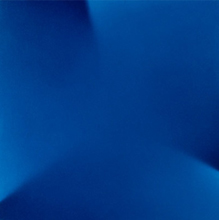|
What’s on in London 2/3.24.1999 |
|||||||||||
Rosana Negrotti reviews a
|
|||||||||||
 |
|||||||||||
|
A single, saturated colour field obliterates each canvas. There are no brushmarks, and the colours are muted, absorbing. I know this is going to sound strange, but even without any figuration, they’re somehow soft-focus, pulling the eye into a kind of blurry expanse. Gwen Hardie then introduces gentle streaksof luminosity, so that the paintings’ corners and edges are punctured by streaks of falling light. |
|||||||||||
|
It’s hard to-describe the effect. The longer you look, the more the pictures seem to change. Initially, this lighting slash has a kind of puckering effect: from a distance its makes the canvases look warped or dented, ridged in places.It’s astonishing that Hardie can make abstraction so very sculptural. After a bit, I suddenly started to think that the paintings were shiny, I don’t know why.Her painted surface seems to be constantly shifting, as though Hardie is creating a kind of optical middle-ground, a visually disconcerting no-man’s land where the eye is no longer able to orient itself. The mind starts to flounder, unable to classify what is transmitted through the optic nerve. Instead of an image Hardie leaves you with a kind of visual wilderness, bereft of opinion as to what you are looking at, and neither knowing nor trusting what you see. Ends Mar 6 |
|||||||||||
| d | |||||||||||
 |
|||||||||||
| s | |||||||||||
